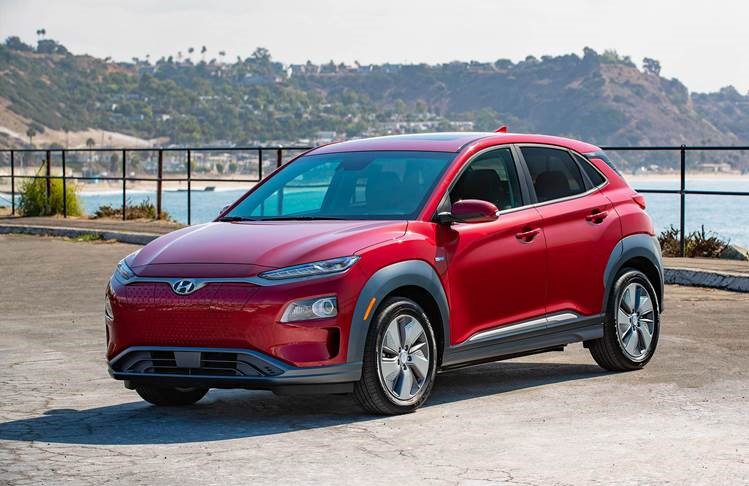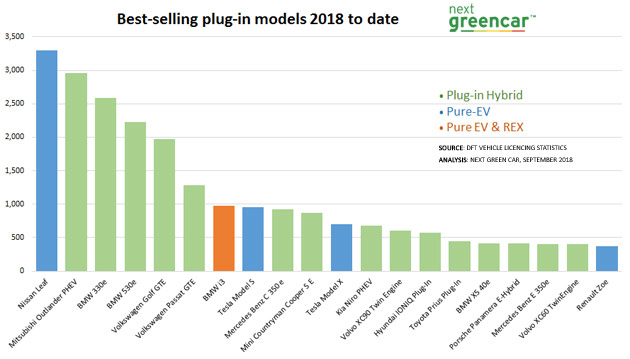With more makes and models of pure electric and hybrid vehicles coming on to the market, it’s easier than ever to find the right electric vehicle (EV).
The introduction of Clean Air Zones in London in 2019, and in cities across the UK from 2020 onwards presents a powerful motivation to invest in an electric or hybrid vehicle. Energy Saving Trust’s, Regional Account Manager, Luke Redfern told us that vehicle manufacturers are releasing a growing number of different makes and models of electric vehicles on to the UK market to take advantage of the opportunity.
This expansion of the electric vehicle market is pushing at an open door. While electric and plug-in hybrid vehicles still make up a tiny percentage of overall car sales, the number of electric vehicles on the roads has surged over the last few years, with more new registrations during 2018 than any previous year.
Electric vehicles are undoubtedly the direction of travel for the car industry generally. They are becoming mainstream, as a combination of improved battery tech, consciousness of reducing carbon emissions and falling prices pushes their uptake.
New models for 2019 and 2020
To date, manufacturers have either opted for a completely new design, such as the Nissan Leaf, or adapting an existing popular vehicle, such as the Volkswagen eGolf and swapping out the combustion engine for an electric system. Each make and model will have access to a range of different connected systems and safety features.
We’re also seeing hybrid vehicles with larger battery packs in order to comply with emissions regulation and the new WLTP test cycle. Many Plug-In Hybrid vehicles with smaller batteries were no longer compliant with the new standards, as their real-world driving range meant they operated for longer on their petrol engine during the new WLTP test cycle. In response, manufacturers have created larger battery packs to comply.
This is good news for consumers as it means that these new hybrid vehicles are more efficient and can be driven as a zero-emission vehicle for longer.
Reducing costs and lead times
The growing EV market should also lead to a reduction in the lead time between ordering an electric car or van and its arrival. Currently it can take anything between two and six months, with particularly long delays for plug-in hybrids. Although, this interim period can be usefully spent in preparation for your vehicle: getting a home charger installed, signing up to public networks and working out where the charging stations are. It’s also a good opportunity to find out more about ecodriving and ways of extending your vehicle’s range further.
While a new EV still isn’t cheap, costs have come down considerably in recent years. For example, it’s now possible to buy a new Hyundai KONA, with a range of 300miles, for around £30K. That might sound pricy until you consider that you previously had to pay in the region of £80K for a vehicle with that range.

Not only is it cheaper than ever to buy cars with greater range, it’s questionable whether most of us really need that size of battery anyway. With figures showing only 3-6% of total miles driven involve long-distance trips of 100 miles or more, around 95% of all car journeys could comfortably be covered by any electric vehicle on one charge. Unless you regularly make long trips in your car, range anxiety really should be a thing of the past.
How green are electric vehicles?
There’s no doubt that electric vehicles produce fewer emissions on the road. There’s also a huge trend across chargepoint providers of using renewable energy – ensuring that the power in the vehicles is renewable too.
However, there is some debate about the emissions created by the manufacture of EVs, or the ‘well to wheel’ emissions. As they’re made on a more bespoke basis than petrol vehicles, this is more labour intensive. However, increased uptake will lead to more sophisticated manufacturing processes. In addition, there’s a volume of research into reusing battery systems happening currently, which in time will increase the green credentials of electric vehicles further.
Battery packs are quite carbon intensive to produce currently, but manufacturers and research teams are investing in looking into a ‘second life’ for each battery, repurposing used electric car batteries for the domestic market.
It’s also worth bearing in mind that electric vehicle batteries aren’t constructed in the same way as 12volt batteries that you find in petrol or diesel vehicles. If your battery goes in a petrol car, you need to replace the whole thing. However, you can replace individual feeder boards or cells in an EV battery, making it far longer-lasting.
Finding the right EV for you
If you’re considering buying an electric vehicle, there are already a number of popular models to choose from. Pure EVs tend to be smaller cars, some of the most popular models include the well-known Nissan Leaf and the Tesla Model S. The plug-in hybrid represents around two thirds of all new low emission vehicle registrations, with the Mitsubishi Outlander and VW Golf GTE among the market leaders.

It’s important to work out which sort of vehicle will suit your lifestyle and driving style the best. Important points to consider include:
- your daily mileage
- how much kit / many people you need to transport regularly
- whether you’re driving in an urban or a rural setting
- how often you need to refuel currently
Bear in mind that the average mileage driven is around 30 miles a day, which means all electric vehicles would suit that as a daily commute. People who usually drive further, or don’t have the ability to charge their car at home on a daily basis (i.e. they’ll be relying on public charge points) might well want to buy a car with a larger range battery.
Urban drivers often experience a lot of stop/start driving; this allows some vehicles to recapture the energy through regenerative breaking and use it to recharge the battery on the go, meaning you may need fewer recharging sessions.
Smooth rural or motorway driving provides fewer opportunities to recapture energy and involves faster driving, which will drain the battery more quickly. So you’ll need greater capacity if you’re heading up and down the motorway on a regular basis.
Whatever your driving needs, the increased investment by the major vehicle manufacturers into the EV market means you’re likely to find the perfect vehicle for you. There’s certainly more choice than ever before.
- read more about experiences of people who have switched to electric
- we explain more about electric cars
- advice on buying a second hand electric car or van